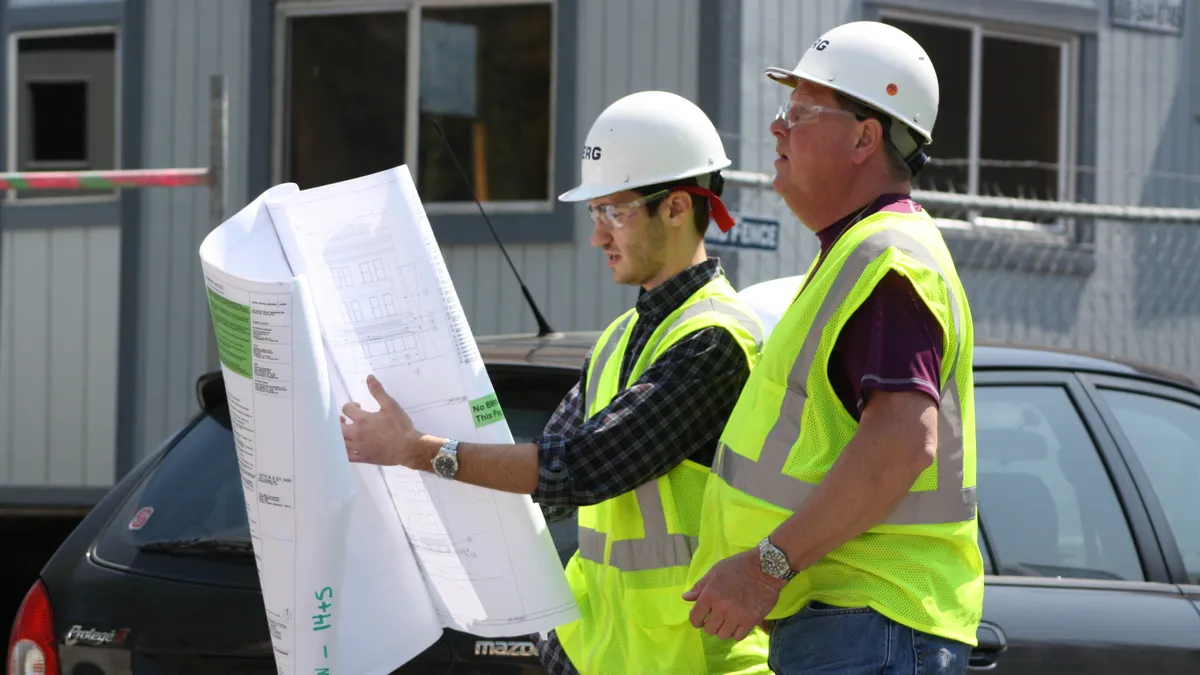Proponents of lean construction tout the method as a way to shave time off project schedules and encourage participants to streamline their processes in an effort to create the most efficient path to completion.
A common method involved with lean's Last Planner System is pull planning, a collaborative scheduling method through which progress is tweaked milestone by milestone. If stakeholders effectively implement this method, they can potentially avoid errors and keep the project on schedule.
How pull planning works
In the pull planning process, all project stakeholders — subs, material suppliers, owners and designers — get together and "reverse engineer" the schedule, typically for each major milestone, or the completion of a significant piece of the project, such as pouring the foundation, completing the structural framing, installing the flooring or completing the landscaping work.
While anyone can start at the end of a project and work their back, it is the collaborative aspect of a pull planning session that sets the technique apart from other scheduling methods.
"You've got all that experience around the table there to come up with the best plan to execute that milestone," said Jeff Esgar, talent development specialist at Tucson, AZ-based Sundt Construction.
A schedule produced by one person — such as the project manager or estimator on a standard construction project — represents only one person's experience. "When you bring in a group of people, there are hundreds of years of experience in a collaborative atmosphere ready to come up with the very best plan," Esgar said.
During a typical session, the group of "last planners," or those authorized to commit their company's resources to the schedule, determine what labor and materials are necessary to meet the goal at hand and commit to a timeline via sticky notes placed on the wall of the meeting room.
Emphasis on collaboration
One of the main objectives of pull planning is to clearly indicate where one trade's work ends and another's begins. Pull planning not only maps out the process, but it also exposes potential roadblocks or extra time in the schedule that can be trimmed away.
This relatively low-tech method cracks through the distance often created by email, cellphone and text communication and forces the participants to get up close and personal, making team members feel more responsible to each other, according to Felipe Engineer-Manriquez, corporate lean manager at McCarthy Building Companies.
The stages of the pull planning process, Engineer-Manriquez said, can be broken down into five conversations built around the words "should," "can," "will," "did" and "learn":
- "Should" pertains to the milestone at hand, or the work the team "should" do.
- The next conversation is what the team "can" realistically accomplish.
- That leads to the "will" commitment set forth in the wall sticky-note system.
- The "did" conversation involves check-ins on progress to make sure the team is working to the schedule.
- Finally, the "learn" component involves a look back at how the team performed and what could have been improved if it failed to meet the scheduled milestone.
"If something goes wrong, they can learn and then prevent mistakes from happening repeatedly," Engineer-Manriquez said. "I never met someone who wants to repeat mistakes over and over." He added that he recommends analysis of any errors. "Finding the root cause gets you to the 'why,'" he said.
An integral piece of pull planning is a high level of collaboration, which cannot be maintained if team members are taking shots at each other. That does not mean, however, that participants don't get involved if colleagues have trouble meeting project deadlines. It's common in this process, Esgar said, to have representatives from unrelated trades help a struggling team member work out strategic issues.
"Everyone's counting on that other person to get their work done, so there's accountability that happens between stakeholders," Esgar said. "You want everyone to be successful."
Potential roadblocks and successes
A major benefit to pull planning is the potential for a tighter schedule and reduced project costs, but the system isn't without some common snags. A primary issue: gaining access to the right person from each project stakeholder, according to Engineer-Manriquez and Esgar. In what might be considered a counterintuitive move to some, the project manager is not usually invited to give input.
Aside from participants showing up unprepared, Esgar said, this is the biggest challenge. "We want the person responsible for executing the work," he said. The best "last planners" are the foremen and crew leaders who have intimate knowledge of the company's workforce capabilities.
"Some project managers think foremen aren't qualified to be in a collaborative meeting," Engineer-Manriquez said. "They eventually learn their lesson, but it happens quite a bit."
Pull planning also has the potential to be slightly uncomfortable for first-timers who are not typically asked to participate in that level of planning and who are often forced to work within a schedule provided to them.
The amount of project information doled out at these pull planning sessions can also be overwhelming for some participants who are used to dealing exclusively with their own trades. "Some people feel that they're losing control of the schedule," Engineer-Manriquez said.
Those factors make it particularly important to onboard people correctly so that they know what to expect and have realistic expectations, according to Engineer-Manriquez. The rate of success at the beginning of a project can be disappointing, but that is typical when a group starts working together. Whoever is leading the pull planning sessions needs to make this clear, he added, so that new participants don't become demoralized and affect the rest of the schedule.
Both Engineer-Manriquez and Esgar said a primary highlight of pull planning occurs when the project stakeholders turn the corner on collaboration and begin working as one unit, making the group's interests a priority.
"When you start hearing people say 'our project' and 'our schedule,' you know you're going to have an explosion in productivity," Engineer-Manriquez said.






















